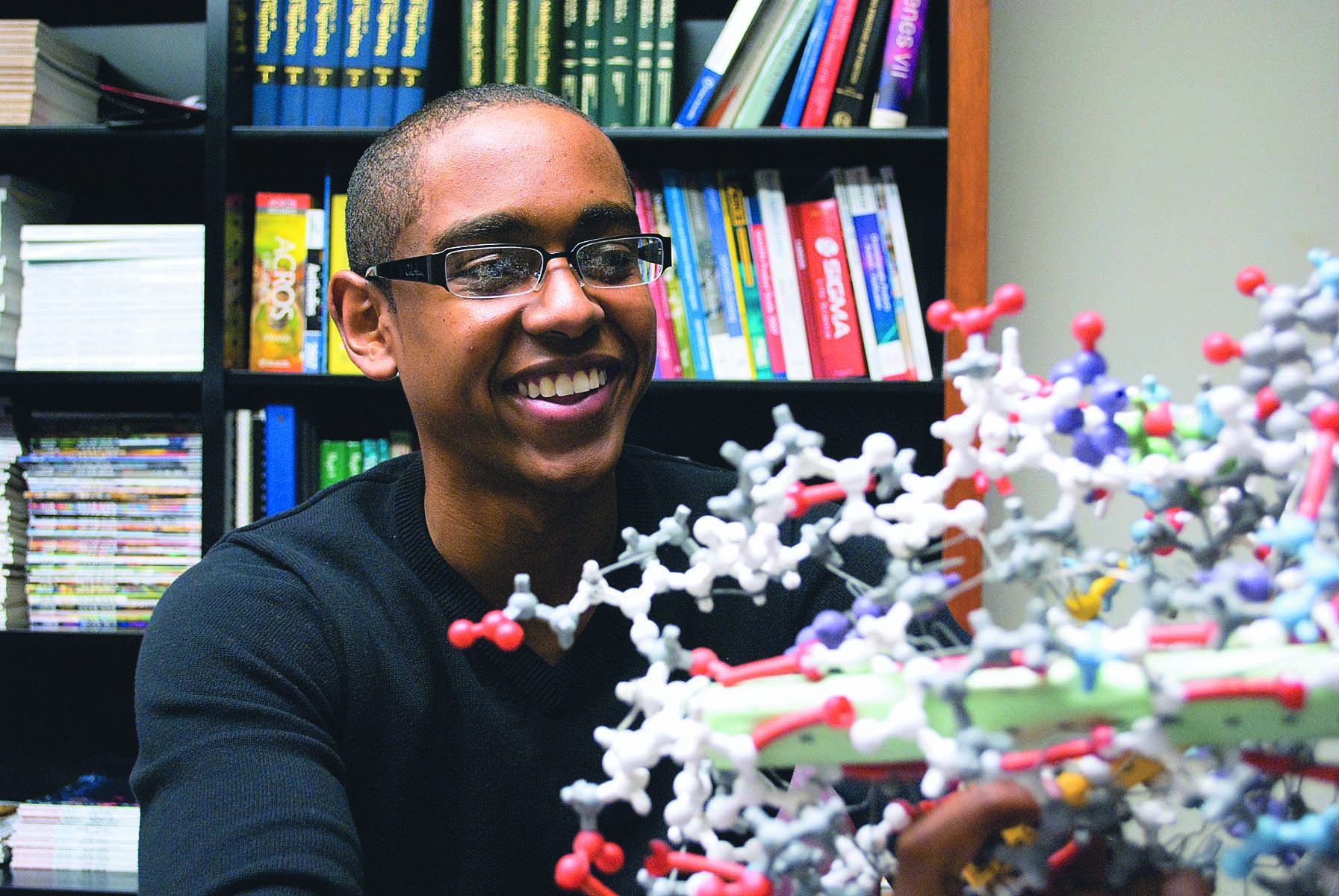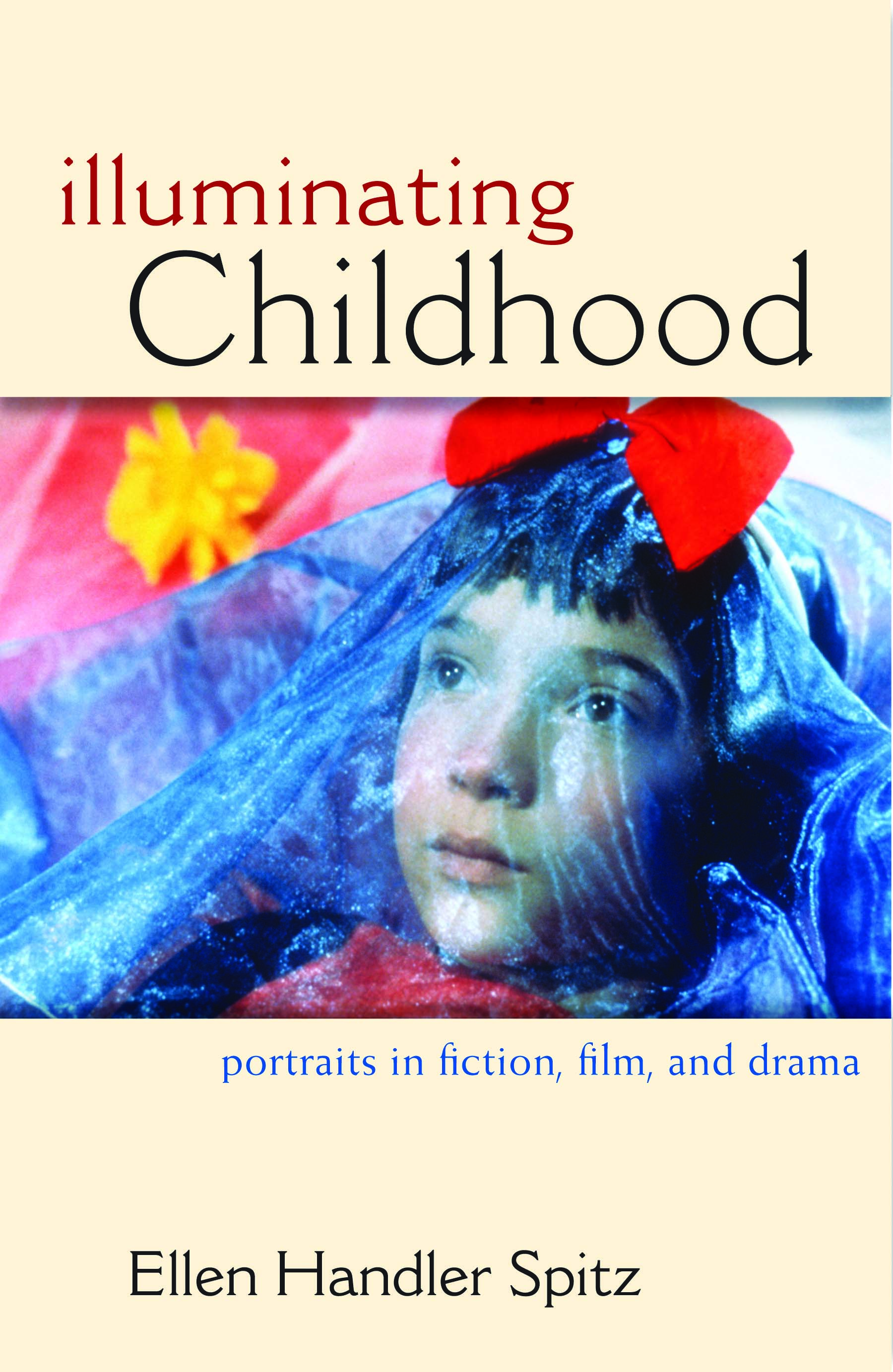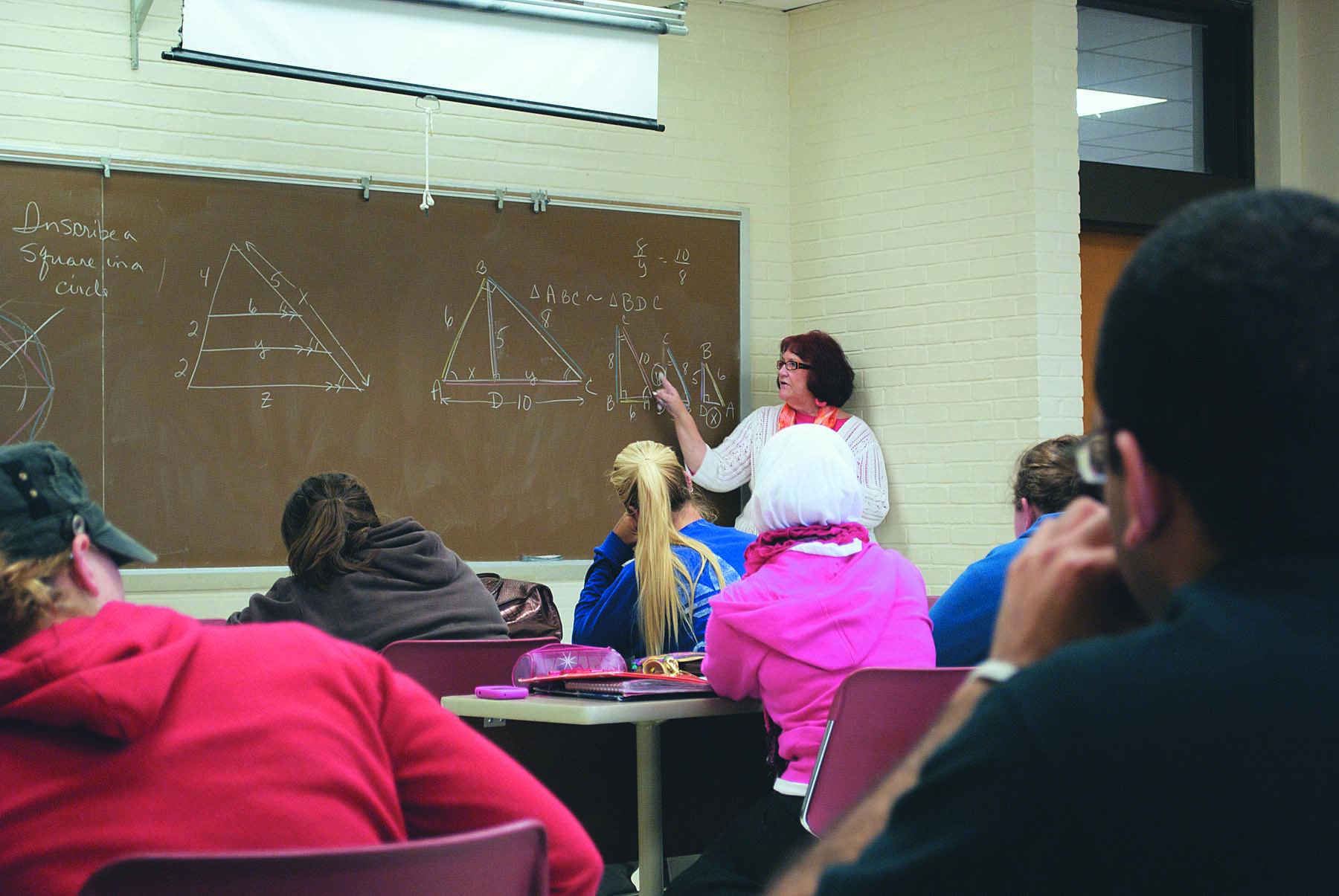The Eyes Have It
When you think of advanced, complex visual systems – eyes with far more acuity of vision than human eyes – you do not think of shrimp. Tom Cronin does. He collects samples of a variety of the animals to study how they view the world, and to see if anything he can learn from them would be useful to us.
Specifically, Cronin, a professor of biological sciences at UMBC, studies mantis shrimps, named because of their folded arms and tilted, mantis-like stance. The creatures – some of which are edible, and can range in size from half an inch to a foot long – are remarkable in many ways.
For one thing, they aren’t really shrimp. The variously-colored creatures are crustaceans from the order Stomatopoda (shrimp are usually Decapods), but these long, flat crustaceans often acquire the “shrimp” name. They have evolved a remarkable visual system because they are predators: they hunt down smaller creatures, crush and eat them. Yes, killer shrimp. They even have a nasty disposition. Fishermen who catch them can get their hands mangled if they grab them from their nets. One surgeon in South Africa lost a hand when a mantis shrimp stabbed him, Cronin says. While they are popular aquarium pets, you don’t want anything else in the tank unless it is very big or very fast. They can knock out the glass in tanks.
But it’s the shrimps’ eyes, and not their temperament, that fascinates Cronin. His lab’s motto is, “If it has eyes, we study it,” and Cronin travels to the Great Barrier Reef in Australia yearly to pick up samples.
The mantis shrimp’s eyes can do things ours cannot.
“They are extremely complicated, in some ways advanced, in some ways primitive,” he says. “They have more color channels than any other animal we know about. Humans are pretty weak in the color vision department.” Humans have only three color channels. Many invertebrates have a fourth channel for ultraviolet or long red sensing.
More interesting, mantis shrimp eyes, which are located on two constantly moving stalks in the head, can see polarized light in ways we cannot. We can see the colors, but the shrimp can tell whether it is polarized, if the electromagnetic vibrations are all going the same direction. That helps them see details we would miss, and are great for hunting.
The system evolved as a “kludge,” attributes piled on attributes during evolution; without the elegance some systems develop. The eyes must keep moving to see anything. They scan, with parts of the two eyes moving separately, and the stalks moving independently. If they see a target, they snap to attention. Because the shrimp have tiny brains and the information collected by the eyes is huge, the shrimps, like most arthropods, have most of their nervous system in the eye stalks.
Cronin gets his funding from the National Science Foundation and the U.S. Air Force. The military is interested because studying the eyes could lead to better instruments for both communication and scientific measurement. The research might also produce better DVD or disc players because more information can be crammed onto a single disc.
Reading Culture in Child Lit
Fables and tales for children are often foundational texts for our culture. But does it work the other way around? Can we read larger movements in popular culture back into the immense amounts of literature for children on the market today?
Ellen Handler Spitz, Honors College professor of the visual arts, takes children’s literature very seriously – as a researcher and a critic. Among her scholarly works are two classic studies of children’s literature and their aesthetic world: Inside Picture Books (1999), and The Brightening Glance: Imagination and Childhood (2006). She also has a new book, Illuminating Childhood: Portraits in Fiction, Film, and Drama, forthcoming from University of Michigan Press later this year.
Now Spitz is also writing about children’s literature from one of the loftiest perches in the journalism of ideas: The New Republic and its online review, The Book. In recent essays, she’s written about a trio of books for children that tackle the topic of same-sex marriage (including the classic Heather Has Two Mommies) and David Wiesner’s retelling of the classic The Three Pigs aimed at “the population of children known as ‘cyberkids,’ ‘digital youth,’ and the ‘net generation.’”
Spitz’s essays read the works for children that she’s reviewing back into an intellectual heritage ranging from Ovid to La Fontaine to Walter Benjamin. And while her pieces are not reviews in the traditional consumer sense, she is also not afraid to make bold assertions.
In her review of The Three Pigs, for instance, she notes that the pigs simply leap out of the story when threatened by the wolf. “By letting pigs out of the story, Wiesner has pushed us out as well… When bad comes along here, you simply jump out of your story into another one. Click. Evil is therefore unreal.” She concludes that “the risk with the cyber-genre is that, with all its glitz, we lose the pity and the terror which Aristotle extolled and Plato feared.”
Spitz was invited to become the regular writer on children’s literature by The New Republic’s literary editor, Leon Wieseltier, and other editors at the magazine. “I said to Leon I’d be interested in doing it,” she says, “but only if I had free rein. I didn’t want to only just review contemporary children’s books.
I wanted more of a range, because my research and my writing have to do much more broadly with children’s aesthetic lives.”
The new platform has turned out to be a perfect fit, she continues: “They said, ‘We don’t want any cutesy, kiddie-lit kind of thing. We want serious, smart, hard-hitting critical reviews.’”
Spitz also sees strong links between her forays into mainstream media and her work at UMBC. “In the United States, we keep our academics very separate from the rest of the world,” she says. “There’s a lot of mistrust. I’ve always hated that. I think it’s absurd… For me, these worlds should not be separated. Everyone gains when they’re not.
The American academy needs to connect more closely with other elements in our cultural life.”
Nobel Nod
Every year, Nobel Laureates in the sciences meet in the Bavarian town of Lindau to exchange ideas. The meeting is also an opportunity for 500 young researchers, selected in a rigorous competition, to benefit from the dialogue. This year, Benyam Kinde ’10, will be among them. Kinde is a Meyerhoff scholar with ambitions to study neuroscience. He was nominated to attend the conference by Peter Agre, a medical doctor, professor and molecular biologist at The Johns Hopkins University who was awarded the 2003 Nobel Prize in Chemistry and received an honorary degree from UMBC in 2009.
Kinde is currently weighing M.D./Ph.D. offers from The Johns Hopkins University and Harvard University. His brother, Isaac Kinde ’05, biological sciences, is pursuing that same joint degree at Hopkins.
Making Math Matter
There’s a small but shiny apple on the desk in Bonny Tighe’s office on the fourth floor of the Mathematics/Psychology building.
It’s precisely the right sort of fruit for Tighe – who is a senior lecturer in the Mathematics Department. Last year, she was also the first recipient of a new award for teaching created by UMBC’s College of Natural and Mathematical Sciences.
The Carl S. Weber Excellence in Science and Mathematics Teaching Award was created in memory of Weber, an assistant professor emeritus of biological sciences known for his passion for classroom teaching. The prize is intended to honor professors and lecturers in the college who combine the qualities of rigor, approachability, inspiration and pedagogical innovation.
Tighe laughs heartily as she recalls being surprised with news of the award at an academic committee meeting. “I was speechless,” she chuckles. “And that never happens.”
“When nominations were sought for the Weber prize, I could not think of anyone other than Bonny who deserved the award more,” says Professor Nagaraj Neerchal, chairman of the Department of Mathematics and Statistics. “Bonny spends numerous hours beyond the class time with her students, and her help sessions are legendary.”
Tighe teaches Calculus I and Calculus II at UMBC – foundational and gateway courses to a wide range of disciplines in the sciences. Many successful UMBC students have numbered Tighe’s no-nonsense approach to the subject among their earliest memories of the university.
She says the students that arrive in her class from high school or elsewhere “are all bright. But most of them have no idea how to take responsibility for their own learning. They just sit there waiting for something to happen. That’s the biggest challenge. They’re bright, so in high school they can sit there and do well. Here, they sit there and they don’t do so well.”
At the beginning, at least. Tighe has a battery of weapons at her disposal to break the passivity and get things moving in the right direction. “I encourage them. I chastise them. It’s worse than being a mother… If you are willing to work, I will work with you every day. That’s the reputation I have. I’m hard. I require them to perform. But if they’re working at it, I’ll do anything to help.”
One of the arrows in Tighe’s quiver is getting the right balance of theory (“the ‘why’ of calculus,” she calls it) and problem solving in the course. Insistence on memorization as the key to mastering calculus is another. “They haven’t been expected to train their memory,” she says of her incoming students. “But there’s no knowledge without memory. All mathematics builds on what you know.”
And then there’s that voice: Tighe’s cheery boom that could waken the sleeping or the dead, let alone the passive student – even in UMBC’s large lecture halls. “My voice is loud,” she laughs. “So that’s not a problem.”
Tighe says the moments when she sees the lightbulb go on over a student’s head – and stay on – is “what keeps you going. If you don’t have those moments, then you quit.”
Targeting Terror in Turkey
Turkey is a nation faced with unique challenges and opportunities. It is a secular democracy – balancing its resurgent Islamic parties with a powerful military that has often dabbled in politics. It is seeking membership in the European Union. It is a key ally of the United States in a region that remains volatile.
One of Turkey’s greatest challenges, however, is an internal challenge: a movement by the nation’s Kurdish minority to gain greater rights and perhaps even autonomy in the country’s southeast region – which borders on Iraq and Iran.
The Kurdistan Workers’ Party (PKK) was formed in the late 1970s under the leadership of Abdullah Ocalan. The group launched violent guerilla attacks on Turkey for a number of years, exacting a large number of casualties and costing millions of dollars. Even Ocalan’s capture in 1999 has not completely stemmed the attacks.
Turkey’s effectiveness in battling the PKK was a topic that intrigued Mustafa Cosar Unal ’09, Ph.D., public policy. Unal, who is an intelligence official with Turkey’s National Police, dedicated his doctoral dissertation to researching the effects of Turkish government anti-terrorism policies aimed at thwarting violence.
His conclusion? The government’s efforts failed to produce long-term reductions in violence, despite bringing about the PKK’s military defeat.
Unal’s research examined the effects of the Turkish Government’s anti-terrorism policies on reducing PKK violence from 1984-2007, the response of the PKK to those policies and the underlying causes of the violence.
Based on a quantitative and qualitative analysis of Turkish government policies and the PKK’s internal dynamics and strategic decisions, Unal concluded that despite some short-term reductions in violence and the PKK’s eventual military defeat, Turkish government policies intended to eliminate PKK violence have been ineffective in the long term. He also determined that policies aimed at incapacitating PKK members resulted in increased retaliatory PKK-initiated violence for up to three months.
Unal also emphasizes the role of the civilian population as key to reducing ethnic violence. He stated that the government’s failure to thwart PKK violence can be attributed largely to its singular reliance on criminological-based policies. Such an approach disregards grievances buried in social context and public sentiments that lead some individuals to engage in terrorist activities. As a result, government policies are likely to be perceived as illegitimate by civilians and therefore increase anti-government hostility, Unal said.
“Regardless of whether or not the government’s counterterrorism policies defeat the PKK and/or reduce the PKK violence, the PKK issue remains unresolved in Turkey and will be affected by internal and international events for some time to come,” Unal wrote.
UMBC President Freeman A. Hrabowski, III, singled out Unal’s work at the university’s winter commencement ceremonies, calling his research on terrorism “crucial to the world we live in today.”
Current events seem to bear out much of Unal’s analysis. While violent clashes between the Turkish military and the PKK continue, the group’s imprisoned leader Ocalan and others have been arguing for nonviolent solutions to Turkey’s disputes with its Kurdish minority. Turkish politicians have also broached the possibility of an amnesty that would bring guerilla fighters and the civilian population which supports them into the political process.
Tags: Summer 2010




